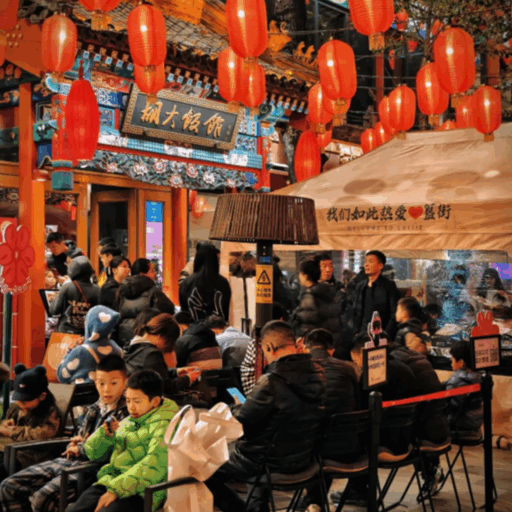The coexistence of ancient and modern influences in Shanghai makes it all the more breathtaking. Whether it's glittering skyscrapers, ancient temples, or vibrant markets, Shanghai is a rich blend of culture, history, and innovation. The technology-driven lifestyle of the city is paralleled by its historical mark, giving first-time visitors and seasoned travelers something unique to explore. The guide contains basic travel information that will ensure every traveler visiting Shanghai feels mesmerized and helps ensure the tours are worth remembering. Prepare yourself for a soul-striking experience.
What Are the Top Attractions to Visit in Shanghai?
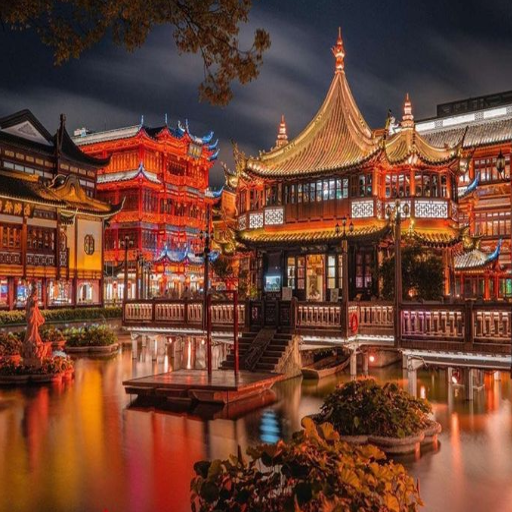
Attractions to Check Out in Shanghai
Shanghai is a city with a unique blend of historical and modern attractions, which makes it an exceptional holiday destination. The Bund is arguably one of the most well-known attractions, a waterfront area featuring colonial buildings and skyscrapers on the opposite side of the river. It's a good area to walk around, particularly in the evening when it's lit up.
Yu Garden is another attraction that you shouldn't miss. It is a classic Chinese garden from the Ming Dynasty and is remarkably well-preserved. The splendid pavilions and reverent ponds provide the city with a peaceful escape. Lujiazui is an area that captures Shanghai’s modern innovation, featuring the famous Shanghai Tower, Jin Mao Tower, and Oriental Pearl Tower, which offer marvelous views of the city.
The rest of the city can also be appreciated within the Shanghai Museum, which is perfect for history lovers with its rich collection of art and ceramics. Huangpu has also actively kept its British style, which modern marvels of bustling shops and Tianze Fang provide. The area is famous for its small streets filled with unique boutique stores, galleries, and contemporary cafes, showcasing Shanghai’s creativity. Shanghai is a fascinating metropolis, and each of its sites offers a separate, unique trait that makes it worth exploring.
Exploring the Bund and Its Historical Significance
One of the areas that is considered an integral part of Shanghai is The Bund. The Huangpu River flows through the middle of Shanghai. It's regarded as one of the prettiest rivers, and on one of its banks, you'll find The Bund. As this represents a fine waterfront architectural district, it is often a popular visit for both tourists and locals. It's a mix of modernization and the city's history. Remarkable collections of Neo-Classical, Art Deco, and frost-like architecture of the 20th century can still be easily found. These were built during the peak and showering days of international trade in the city and mirror the traditions and fusion of the people.
Pudong’s modern skyscrapers, like the Oriental Pearl Tower and the Shanghai Tower, can be found within the bounds of the Bund. The Bund is considered the financial and commercial hub of China. The Bund, also known as The bund, is considered the oldest trading harbour in China and serves a precious glimpse to the world and its history. Apart from being rich in historical content, the Bund is also enriched with luxurious mansions, lavish dining halls, and premium provisions, giving it a rich blend with modern civilization.
The Bund is preserved as a monument of Shanghai's development, standing at the intersection of China’s colonial past and modern-day Shanghai. It serves as a hallmark of Shanghai's growth. It remains a place of interest for anyone seeking to gain a better understanding of China's ancient architecture alongside the city's swift development.
Elder Water Town: A Water-Inspired Town and Zhuijiajiao Excursion
Zhuijiajiao Water Town is considered the “Venice of Shanghai” and is known for its more than 1,700 years of history. Zhuijiajiao Water Town is located 30 miles east of Shanghai. The town features contoured canals alongside mussel stone bridges. With its preserved architecture from the Ming and Qing Dynasties, Zhuijiajiao Water Town is renowned for its tourism. Having a walk over the historical water town can expose people to the contoured roads built by traditional buildings alongside modern flourishing markets.
The Fangsheng Bridge and Kezhi Garden are two of the most famous places in Zhuijiajiao. A bridge built from stones, the Fangsheng Bridge, is one of the famous landmarks. The bridge is famed for being the longest and oldest. It has captivating views and exquisite carvings. Watching the rivers from the bridge can be soothing for travelers. Kezhi Garden, with pavilions featuring complex designs, also presents peace. Along with the greenery, the lotus pond is one of the highlights that make the region peaceful.
Alongside its historical charm, Zhuijiajiao has blossomed with modern comforts, including boutique shops and tea houses that offer customized, locally made goods and traditional cuisine. From exploring cultural intricacies to enjoying local dishes like Zongzi and smoked tofu, Zhuijiajiao is a well-rounded travel destination that offers a balance of history, art, and cuisine. Zhuijiajiao is the ideal destination for those who want to escape fast-paced Shanghai life, as it is easily accessible for a fulfilling and calm day trip.
How to Plan Your Itinerary for a Day in Shanghai?
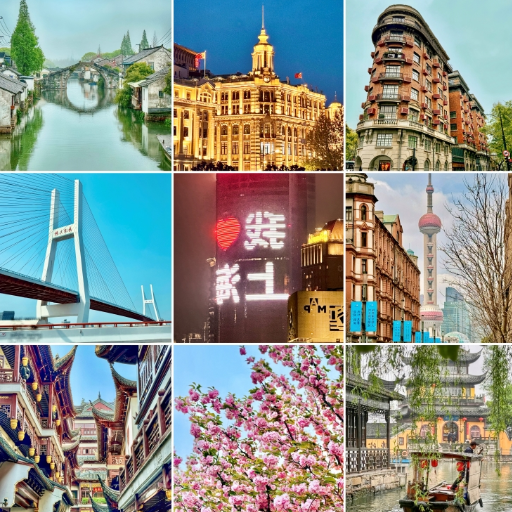
Crafting a Day Tour of Shanghai Like Never Before
When picking a day to spend in Shanghai, kick off your morning with The Bund. Go for a walk along the waterfront and get some fresh air while you gaze at the marvelous views of Shanghai’s skyline. Afterward, go to Yu Garden, where you'll find a serene classical Chinese garden, and explore the neighboring Yuyuan Bazaar, which is excellent if you want to do some street food and souvenir shopping. For lunch, don’t forget to try to get some local xiaolongbao (soup dumplings) from well-known eateries in the vicinity.
Capture some incredible pictures of Yu Garden, visit the Shanghai Museum, and marvel at its phenomenal collection of art and Chinese artifacts in the afternoon. After visiting the museum, stroll around the French Concession. Enjoy the beauty of the boutique shops and tree-lined streets. Towards the end of your splendid day in Shanghai, visit The Oriental Pearl Tower or Shanghai Tower for some panoramic views of the city. Don’t forget to get some opinions during sunset as the views are stunning. Make sure to have dinner at a fancy restaurant situated near the Huangpu River, where you can enjoy a scenic view of the river.
Embed Cultural Sites like The Jade Buddha Temple
While visiting this spiritually important landmark, one discovers that the Jade Buddha Temple is one of Shanghai’s famous sights. The temple was built in 1882 and is well-known for housing exquisite jade Buddha statues, which were brought from Burma. Each of these statues is carved from a single piece of white jade. One of the sculptures is known as the Sitting Buddha, and it is encrusted with semi-precious stones. The calm demeanor the statue carries symbolizes peace and offers visitors a sense of compassion. The sculpture draws attention alongside Shanghai's modern adventures. Most tourists become fascinated with the traditional Buddhist design and intricate carvings of the temple alongside its vibrant colors. Apart from being a renovated aesthetic space, the temple serves as an unparalleled place of worship, endowed with serene beauty.
While at the temple, don’t forget to visit the Grand Hall, where you will find golden statues of the Three Golden Buddhas along with their celestial guardians and disciples. The temple also overlooks a courtyard that is exquisitely maintained and abundant with greens and incense, making it an excellent spot for meditation and contemplation. To further enrich your visit, be sure to attend one of the temple's prayer ceremonies. The chanting and ritualistic aspects of Buddhism add another layer of understanding within the Buddhist world. Regardless of whether your objective is to attain some wisdom or appreciate the skillful work done at the temple, the Jade Buddha Temple will not disappoint. The temple seamlessly integrates culture, history, and peace all at once.
How To Enjoy Old Shanghai
The modernized part of the city beautifully integrates the city's rich history, as seen in the old, preserved buildings, vibrant street markets, and culture-rich traditions. The journey can be started at the Yuyuan Garden, a most famous symbol of classical Chinese gardening, featuring meandering paths, ponds with fish, and ancient pavilions that transport one back to the Ming Dynasty. The Yuyuan Bazaar, located right next to the garden, is a traditional market that sells local handicrafts, snacks, and many other items that will immerse you in the local culture.
You can walk through the Longtang (alleyways), the center of Shikumen in Shanghai, to see the beautiful contrast of the Yangshupu skyscrapers. These stone-gated houses closely resemble Western and Chinese architecture, making them unique to Shanghai. Moreover, the place is nostalgic for the people who remember the colonial rule in Shanghai. If you want to experience traditional Chinese cuisine, don’t forget to visit Fangbang Road as well. There, you can have soup dumplings or scallion pancakes, which are prepared using traditional methods passed down through generations.
In the morning, visit the Huangpu River Bund and view the iconic European-style buildings. It’s a great way to rejuvenate yourself before visiting the great Shanghai History Museum. They have numerous ancient artifacts that help you understand the city's incredible history. After indulging with the east and the west, head south where you can walk the streets and admire the city at your own pace.
Start from Tianzifang, which has many small passages and is filled with high-end shops, art galleries, and unique cafes. The region has an incredible mixture of both modern and traditional Shanghai, making it a must-visit for travelers. Walking through the city will truly be an unforgettable experience.
What Are the Best Shanghai Tours Available?

Private Shanghai Tours: Customized Experiences
Private Shanghai tours offer complete personal customization and experiences tailored to meet your interests best. From informative nature walks to watching the stunning skyline on river cruises, and even sailing on the Huangpu River, these tours offer incredible convenience and exclusivity. Local expert guides share their best stories and knowledge of the rich heritage, culture, and changes to both well-known and lesser-known places.
Each tour can be customized to meet the needs of various voyagers. Some tourists may want to see the Shanghai Tower, the latest addition to the Shanghai skyline and a true architectural wonder, while others may prefer visiting the traditional Yu Garden. Food lovers and culinary daredevils have a field day with authentic xiaolongbao and bustling street food markets. Other sought-after bespoke private tours for families and small travelers come with pre-arranged transportation, activities, or even luxurious cars. Whether you wish to explore at your preferred pace, learn the history, and enjoy local delicacies, private Shanghai tours are available for all, and no detail is overlooked or unattended.
City Sightseeing Bus: An Efficient Way To Explore
The city sightseeing bus offers a straightforward way to see Shanghai's popular landmarks and attractions. These buses are pre-scheduled to depart from the city's key locations towards places like The Bund, the Oriental Pearl Tower, and Yu Garden. Switching buses within the allotted time allows travelers to tailor trips to suit their unique preferences. Numerous modern sightseeing buses come fitted with foreign language audio guides, and therefore, passengers are offered detailed descriptions of essential landmarks and Shanghai's history and culture.
Flexibility of the bus routes is one of the main advantages they provide, especially for travelers with short durations in the city. Sightseeing from the open-air upper level of a double-decker bus offers panoramic views, while the lower level has clement air-conditioned spaces in the summer months. Like many other services, tickets are sold online or at major city stops, and selling them for a limited period of unlimited access aligns economic practicality with uneased exploration. City sightseeing buses make exploring Shanghai's landmarks a captivating experience.
Gourmet Walks: Sampling Shanghai’s Delicacies
The food culture of Shanghai is fascinating due to its traditional and contemporary influences. The city's culture is shaped by the diverse food offerings, from street food corners to high-class restaurants. Signature xiaolongbao (soup dumplings) and shengjianbao (pan-fried buns) prove that Shanghai is the beacon for mouthwatering steamed and stir-fried delicacies. Local glutinous rice cake desserts are as sweet as they are nutritious, and robust, spicy stir-fries explode with flavor, adding zest to the plate.
Food tours provide an excellent opportunity to appreciate the culinary skills of Shanghai while gaining insight into its boundless history with every taste and scent. Tour guides frequently guide small groups in famous places like the French Concession and Old Town, where people share their rich culture alongside culinary specialties. Also, the tours sometimes take guests to lesser-known places, such as tea rooms, shops selling handmade noodles, or artisanal pickle booths. Thus, whether they are experienced food lovers or curious about new tastes, everyone gets a pleasant and educational experience on mouthwatering food tours through the culinary capital of the world.
How to Choose Between Different Shanghai City Tours?
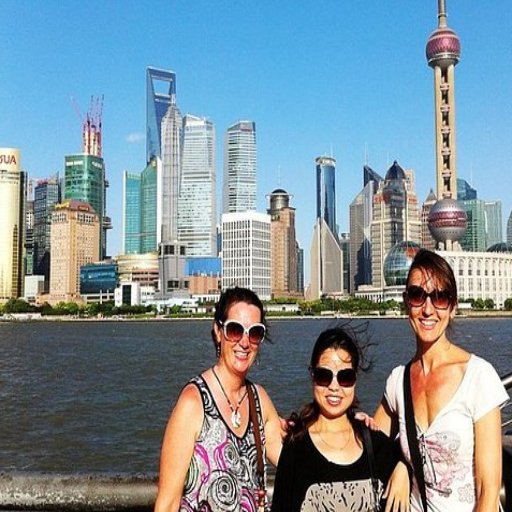
Comparing Group Tours and Private Tours
It is vital to look into the cost, flexibility, and overall experience of the trip when choosing between private and group tours in Shanghai. Group tours tend to be more affordable, which suits tourists looking to mingle and save money. These tours have a set itinerary, which is good for a quick stop at The Bund, Yu Garden, and Nanjing Road, but there is no customization to individual preferences and choices.
Private tours, however, offer an unmatched level of personalization to suit any traveler's needs. If you want to visit modern buildings like the Shanghai Tower or explore cultural places like Tianzifang, private tours will allow you to choose the time and places you want to visit. They are relatively more expensive but come with the added benefit of a tour guide, which makes for a more enjoyable experience of learning about the city’s history, culture, and other interesting places. In the end, it all depends on the budget, available time, and desired level of customization.
Affordable Travel Destinations for Sightseeing
Having an exciting trip doesn’t require breaking the bank. Sightseeing can be affordable with a bit of creativity and planning. For example, local transportation, such as buses and metros, is much cheaper than hiring a taxi and offers the same convenience. Many tourist hubs also provide bike rentals, allowing you to experience the attractions at your own pace.
It is also possible to enjoy parks and landmarks for free, and some museums offer heavily discounted entrance fees on special days. Travel on these dates to enjoy the beauty of culture, history, and art, all available to everyone without shelling out ludicrous sums. Even the local markets have priceless treasures to enjoy when looking for food, so there's no need to dine at expensive restaurants.
Considerable discounts can be availed through city passes that provide bundled deals and also include a portion of the public transport fee. For long-term stays, this is a great deal. Research avoids the travel rush, or enjoy the local tips to stretch your budget while enhancing your travel experience. With some forethought, it's possible to visit multiple destinations within your budget and make the most of the trip. Even casual travelers can have a lifetime experience.
Efficiently touring Shanghai's Top Attractions
The city of Shanghai is a mix of a fast-paced city alongside new technological advances, with its incredible history. The Bund is a popular landmark, a waterfront area featuring impressive old buildings and modern Shanghai-style buildings. The place is crowded, so try to arrive in the morning to calm your photo craze during sunrise for nature lovers.
Yuyuan Gardens is a perfect example of tranquil nature, taking you back in time without the noise while you're in the city. The garden has koi ponds, rockeries, pavilions, and beautiful flowers around. You can always find peace in this wonderful garden on weekdays. You can also find incredible temples near the garden, along with shops selling unique souvenirs.
Shanghai Museum has diamond-like displays of centuries-old Chinese sculptures. The entry tickets are usually free, keep an eye on the website just in case they do have special events. Another place to visit is the observation deck of the Shanghai Tower in China. It’s the tallest building in Asia and gives beautiful, breathtaking views of the city.
Using the modern and well-planned metro system is perhaps the most efficient way to navigate to Shanghai's many attractions. The English signs are helpful, and the low ticket prices make traveling between landmarks a breeze. Pre-purchased metro cards and app-based transit passes eliminate the hassle of buying individual tickets for each ride. With a bit of careful planning and organization, timing and transit routes can funnel visitors to various parts of Shanghai, minimizing obstacles and maximizing their exploratory experience within the city.
What Should You Know About the History and Culture of Shanghai?
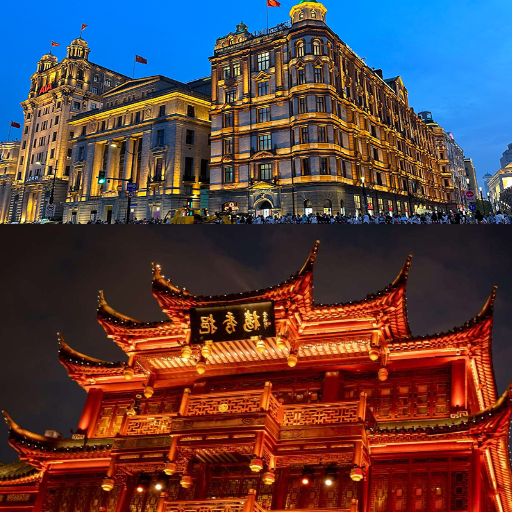
Understanding the Historical Significance of the Oriental Pearl Tower
The Oriental Pearl Tower is known as one of the world's most famous skyscrapers, serving as a major tourist attraction and holding cultural significance as a symbol of both Shanghai and the country's development in modern China. I later learned that it was built in the 1990s, during China's reform era, and later transformed Shanghai into a free trade zone, attracting international business investment. It was designed as if pearls were placed on top of a jade plate. With this design, shards of older Chinese civilizations are often furbished in words and evocative monologues, turning a pillar towards modern innovation that contrasts architecture with mythology.
From a historical standpoint, the Pearl Tower serves as a gigantic attention-attracting device that triggered foreign investment. This can be seen from the location that was selected for building it, Lujiazui, which is now the center of business activities. Skyscrapers such as the Jin Mao Building serve as the tower’s center of attraction. The best experience tourists can have is overlooking the decks, which let them feel the vastness behind Huangpu and the sparkle that outlines all the bursts of light from above Shanghai and its ever-growing dynamism.
I also began to notice its cultural importance during my travels. The tower contains the Shanghai Municipal History Museum at its base, which helped me understand the city's history as it was told to me, from its colonial past to the globalized city it is today. The Oriental Pearl Tower is not merely an engineering accomplishment from my perspective; it's a link between Shanghai's ancient heritage and modernization aspirations.
A Study Visit to the Shanghai Museum Strapped with Cultural Insights
The Shanghai Museum gave me new insights into China's culture, and it's an experience that I will never forget. The first thing that drew my attention was the exquisite design of the museum and its location, which is right in the center of the city. The sight inside was more fascinating than the astonishing view outside. It has a rich and diverse collection of ancient Chinese art and crafts, including bronzes, ceramics, calligraphy, and jades. Every display was significant in China’s history, and it is astonishing how much skill and talent people had that is forgotten. The gallery that caught my attention the most was the bronze gallery, since it had wonderful pieces and increased my understanding of early work that led to advanced civilization.
The detailed arrangement of the exhibits in chronological order captivated me the most. This enabled me to perceive the transformation of Chinese civilization, art, and culture systematically. Among Chinese artistic works, the calligraphy section truly stood out as inspiring. It showcased the intricacies of art and language in China's history. I liked the way the museum provided context for each artifact beyond the pieces themselves, so that I could appreciate their historical significance in terms of the artistry on display.
It was profoundly educational and wholesome at the same time. It prompted me to consider the means through which certain ideals and customs are upheld in contemporary times. The Shanghai Museum is certainly not to be missed by those interested in exploring the origins of Chinese culture and the events that have influenced contemporary China. It is not only a site for relics but also encapsulates the essence of history.
How the Former French Concession Impacts Contemporary Shanghai
The mark of the French Concession is easily noticeable in modern Shanghai, as it fuses its rich colonial heritage with the city’s contemporary vibe. Strolling around the area, one can see the preservation of old European town planning and architecture, which sets it apart from the rest of the city. The Villas and Art Deco structures alongside the narrow passages serve as a bold hallmark of Shanghai’s multicultural identity during the 20th century. This French convent was a center of cultural development, and the remnants of this past still shape modern Shanghai’s character.
What I find most captivating about the French maintaining control over Shanghai is the juxtaposition between the old and new at the same time. For one, the Shikumen-style townhouses have been stylishly repurposed into Xintiandi and Tianzifang, featuring bustling boutiques, cafes, and art galleries, thus preserving the past. However, the appeal of the districts has also led to an increase in modern retail, as elegant enterprises flood these historic sites. The stunning charm blended with fast-paced urbanization makes The French Concession a uniquely vital part of contemporary Shanghai.
Traveling to this part of town helped me understand the growth of Shanghai as a global city. The heritage of the Former French Concession epitomizes adaptability, creativity, and tenacity, forming a framework for modern lifestyles while preserving its historical context. It is a town that straddles the past and the present simultaneously, giving residents and tourists a completely new perspective on what Shanghai encompasses.
Frequently Asked Questions (FAQs)
Q: What are the notable landmarks to view during the Shanghai city sightseeing bus tour?
A: While on the Shanghai city sightseeing bus tour, you will have the opportunity to view the Shanghai Tower, The Bund, Yu Garden, and even the Shanghai World Financial Center. These places of interest showcase the rich history of the city and its modern architecture.
Q: Are there any other attractions that are designed as a day trip from Shanghai?
A: Many day trip attractions are easily accessible from Shanghai. Among the popular choices are Zhujiajiao Water Town and nearby Suzhou and Nanjing, which feature stunning cultural and historical landscapes for tourists to enjoy.
Q: What is included in a private day tour of Shanghai?
A: A private Shanghai day tour allows you to enjoy the city with a professional tour guide. You can decide on the specific locations you wish to tour, such as the Humble Administrator’s Garden, top city attractions, and other sites, taking your time as needed.
Q: How do I get the first-timer's tour in Shanghai?
A: A first-time tour of Shanghai should include visits to Yu Garden, the Bund, and the Shanghai Tower. Make sure to read reviews provided by companies online, as they can help you pick the right tour.
Q: What is included in a full-day tour of Shanghai?
A: Usually, in a full day in Shanghai, tourists take part in Huangpu River sightseeing, Yuyuan Garden, and the Tower of Shanghai. Meals, transportation, and a licensed tour guide are usually included in the package.
Q: What are the top places to visit to tell the story of Shanghai?
A: The traditional features of Shanghai, which remain unspoiled by Western Culture, include The Bund, Yu Garden, Zhujiajiao Water Town, along with Shanghai Tower and the crowded Shanghai World Financial Center. Enhancing your experience further would be a day trip to Suzhou.
Q: Is there a group tour available from Shanghai that covers all the major sites in Hangzhou?
A: Most tour companies offer inclusive packaged trips where you can join a group tour to Hangzhou and cover all the areas of interest. The offer includes transportation, entrance fees, and guided trips to the scenic places around West Lake.
Q: What do you suggest I wear during my tour in Shanghai?
A: If it happens to be their walking day, Zhang g walks around Shanghai. Comfortable clothing and suitable shoes are recommended, as well as a change of outfit and layers in case the weather changes throughout the day.


